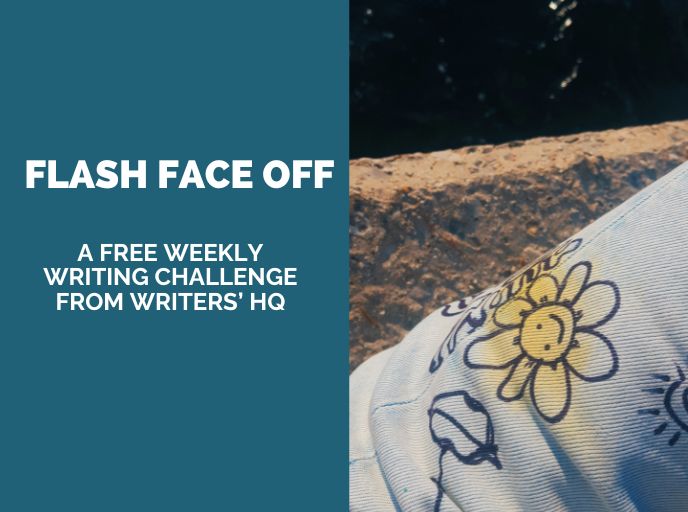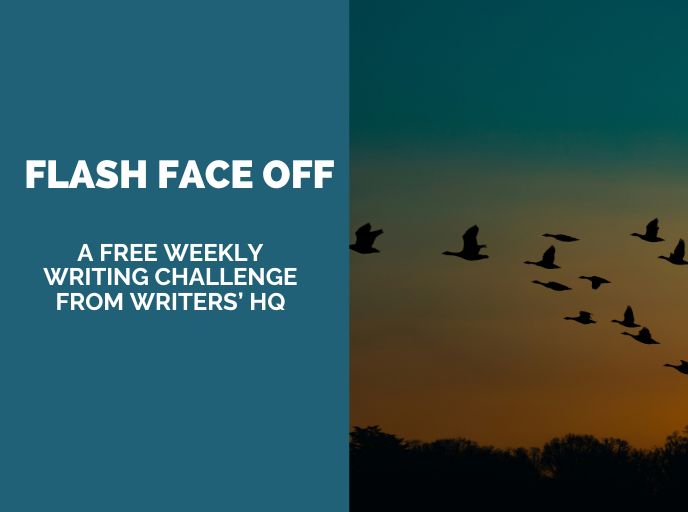
As a Writers HQ mod, it gives me a t-shirt twisting amount of shame to admit I haven’t actually done any fiction writing this year. I kind of guessed this would happen when I realised how much non-creative writing I was going to have on my to-do list from my very science-y university course. Between that and my work as an access consultant, I was starting to think I would have to fetch all my empty notebooks from their forgotten drawer and rehome them with someone who could give them the life they deserved.
That was until last week. The performance festival I was working with asked me to do some last-minute video description for them. The videos were audio performances, one was a spoken word piece and the other a poem. Both pieces were accompanied by compilations of video clips that matched with the mood of the pieces. Video description is a written description of the visual video content so that blind/visually impaired audience members can access it.
I have chronic fatigue which can make it hard for me to think clearly so I was writing on autopilot at about 9:30pm. Here are some snippets from my work:
An empty bench dappled in sunlight framed by a fence of woven wicker.
Used yellow post-it notes curl on a desk with a black pen draped across them.
A woman drinks from her cup and giggles as she stands next to her birthday cake, the candles flickering in the dark room.
An old, patched teddy bear with amber eyes sits on top of bedsheets.
Leaves and branches sway in shadow across a sunset sky.

Now, we’re all prone to being mean about our own work, but when I read back over these descriptions, I thought they were pretty good. I can imagine the scenes as I read them which is a good sign for me as that’s what I do when I’m really loving a good story. The most surprising thing is, I almost didn’t realise I’d written something I was proud of. When I write alt text or video descriptions, all I’m usually thinking about it whether what I have written accurately portrays the visual information. The description isn’t for me, it’s to meet the access needs of others. I write these descriptions all the time and it turns out; they’re really improving my descriptive writing.
We should all be writing alt text and video description if we are able. Everyone deserves equal access to information and including disabled people in the writing community expands our artform, brings in new perspectives and techniques, and helps us to challenge unnecessary boundaries. An added benefit is that writing alt text and video description helps us to practice the skills of observation and description. With so many of us using social media daily, it’s a writing exercise built into our normal routines.

You may find when you sit there with the first image in front of you, you get a visit from an old friend, self-doubt. What if I write the wrong thing? What if people criticise my description? What are words again?! Like any writing skill, practice makes perfect (or progress, there’s no such thing as perfect).
To help you out, here’s a guide to writing alt text and video descriptions.
Give it a try for a week or two and soon you will find that practising your descriptions makes your writing clearer and more concise. Your content will be accessible and that will bring you into contact with more writers and increase your creativity. Everyone wins!
WRITING EXERCISE:
Opportunities to practice this skill are everywhere! Every time you see a cool or interesting image on your Twitter timeline or while scrolling t’internet or in a magazine, take a minute to scribble down a brief description, as succinctly and vividly as possible.
The great thing about alt text is it needs to be visually clear and to the point, so whoever’s reading it can conjure up an accurate image in their mind. Developing this skill will not only make your fictional description absolutely spot-on, but it will also help you cut the extraneous fluff that might be weighing your writing down.
So let’s give it a try right now, from three different angles: places, people and things.
Pick an image from each of the following categories and practice writing a short description to bring it to life. Give the reader as much visual detail as possible but try not to just list what you see — make it a pleasure to read and imagine. There’s no reason why alt text (and certainly why your fiction) should be boring!
A PLACE



AN EXPRESSION



AN OBJECT



How did you get on? Could you use one of your descriptions in a WIP? Or perhaps they’ve sparked off a whole new story…
If you fancy developing your alt text snippet even more, try out one of these exercises:
- conjure up an unsettling atmosphere
- imagine a place you’ve never been
- or practice describing a brand new character
Or jump on board our FREE Five Days of Flash challenge to turn your descriptive snippets into a piece of flash fiction!
Keep practising, find new references to help you build your descriptive skills, and most importantly: make sure you use alt text wherever you can to help others share in visual resources!








